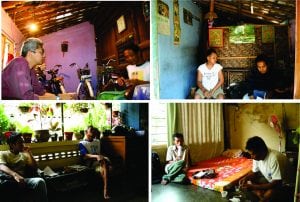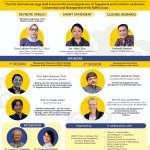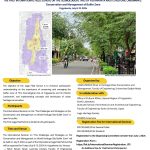Kotagede Heritage District Yogyakarta Indonesia, a 2008 World Monument Fund 100 list of World Endangered Sites, is the former capital of the Islamic Mataram Kingdom in the 16C. This heritage site is well-known for its kampong of sterling silver craftsmen, traditional and unique Kalang houses, and is now seriously endangered since the Central Java earthquake on May 27, 2006. As a result of this 5.9 Richter tectonic earthquake, at least in Jogja and Central java, 6.000 people died, and many more were injured and lost their homes and Jogja has lost its unique cultural heritage.
In Kotagede, many traditonal houses, which are an embodiment of folk heritage, have been destroyed by the earthquake. Their owners deprived of the necessary resources might not be able to restore buldings in their traditional forms. Most silver craftsmen have lost the necessary resources to continue their work. However, before the earthquake Kotagede already had many problems due to social changes. There are more and more young people do not like living in Kotagede, as it does not meet their demands regarding space. This brings about the decline of handicraft industries, decreasing interest in cultural activities, and neglecting of architectural remains where many traditional houses are ignored as well.
Image 1. Surveys to Silver Craftsman
Priorities need to be set in the context of emergency response and recovery actions post earthquake regarding the urgency of lost heritage. A comprehensive revitalization program of Kotagede Heritage District that will unify all the revitalization efforts towards common goals to revitalize tangible an intangible cultural heritage, and to restore local economic condition as an essential part of restoring a sustainable environment has been proposed.
A damage traditional house on 750 m2 of land, including all furniture, in Jagalan, Kotagede was bought by Universitas Gadjah Mada (UGM) right after the May 27 earthquake. A Center for Heritage Movement UGM is the new function of this folk heritage which is now known as “Omah UGM” (UGM House). This effort is part of the awareness of the UGM in the long-term program of mediating the Kotagede local community to revitalize their heritage district. Presently, the Department of Architecture and Planning, Faculty of Engineering, UGM in collaboration with Exxon Mobile Oil has implemented the Kotagede Crafts Revival Post Earthquake in this center (2007 – 2009).
Image 2. One of Jewerly Exhibition (Mutumanikam)
The program is (1) revitalization the craftsmen livelihood, (2) marketing, and (3) cultural revitalization and tourism development. One of the focus programs is development of the low-income craftsmen on jewelry creation and its quality. New design based on traditional crafts and technical assistance has been introduced and carried out. Started with 40 craftsmen, the new spirit of silversmiths has emerged. And this is the strategic way to protect the lost of intangible cultural heritage as many silversmith intend to change their high skill of handmade into whatever they can do such as construction workers.
Image 3. Products of Silver Craftsman in Kotagede






